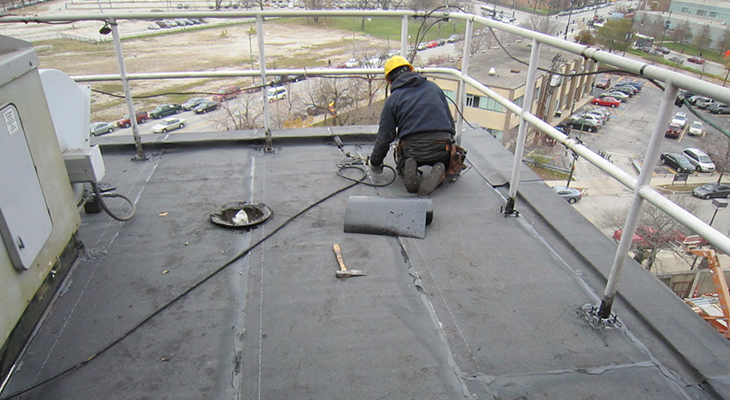Except as otherwise provided in paragraph b of this section each employee engaged in roofing activities on low slope roofs with unprotected sides and edges 6 feet 1 8 m or more above lower levels shall be protected from falling by guardrail systems safety net systems personal fall arrest systems or a combination of warning line system and guardrail system warning line system and safety net system or warning line system and personal fall arrest system or warning line system and.
Osha regulations for working on roofs.
1926 501 b 4 ii.
Follow the safety guidelines described above to prevent potentially dangerous or fatal falls when working atop flat roofs.
Two osha standards can apply 29 cfr 1910 which governs general industry safety standards and 29 cfr 1926 which governs construction sites specifically.
Osha safety standards especially for roof fall protection can be a source of confusion for many industrial companies.
The osha general industry standards exclude construction as well as agriculture and marine industries which also have their own standards but both standards can sometimes apply to the same.
Each employee on walking working surfaces shall be protected from falling through holes including skylights more than 6 feet 1 8 m above lower levels by personal fall arrest systems covers or guardrail systems erected around such holes.
Don t take flat roof work for granted even though the work may appear to be safer.
Employees should have.
Osha requires fall protection for workers on surfaces over six feet off the ground that do not have.
The safety monitor is always a competent person 29 cfr 1926 500 b.
Or on roofs 50 feet 15 25 m or less in width the use of a safety monitoring system alone is permitted 29 cfr 1926 501 b 10.
Roofing work is hazardous.
Osha holds employers responsible for deciding whether a roof provides enough structural strength and.
















































